Surviving Sandy: Stories of Urban Environmental Stewardship explores the catalysts and inhibitors of social-ecological system (SES) resilience in the form of civic ecology practices in New York City after Hurricane Sandy in 2012. Contrary to popular narratives of chaos in the aftermath of destruction, this paper examines how humans systematically organize in the face of tragic events to better their communities.
Desmos as Tranformative for Algebraic Proof
4-Views
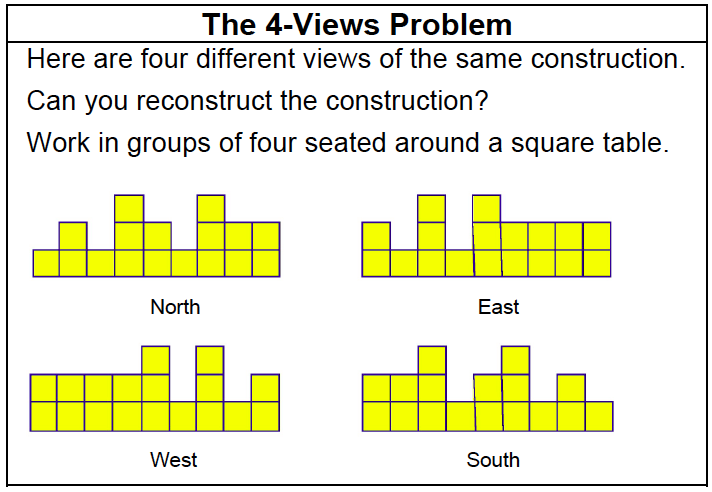 How might four people distribute, negotiate, transform, and integrate their distinct perceptions of a problem situation? The key to solving the 4-Views problem as well as its learning opportunity is in realizing that each of the views is not a vertical wall but a projected depth image. Collaborating problem solvers might arrive at this realization upon witnessing that their respective “walls” are technically incompatible, so that they must resolve this ostensible conflict. In this research study, four 8th grade students collaborated on solving the problem with grid paper and blocks. Their work was videotaped and analyzed in order to better understand the emerging relationships between social and cognitive aspects of group-solving complex mathematical problems.
How might four people distribute, negotiate, transform, and integrate their distinct perceptions of a problem situation? The key to solving the 4-Views problem as well as its learning opportunity is in realizing that each of the views is not a vertical wall but a projected depth image. Collaborating problem solvers might arrive at this realization upon witnessing that their respective “walls” are technically incompatible, so that they must resolve this ostensible conflict. In this research study, four 8th grade students collaborated on solving the problem with grid paper and blocks. Their work was videotaped and analyzed in order to better understand the emerging relationships between social and cognitive aspects of group-solving complex mathematical problems.
This research demonstrated the emergence of relationships between distributed cognition and collaborative perception. The distribution of the 4-views to individuals allowed each student to attain ownership within the problem-solving process, as they were able to enact upon their perception with the blocks by building their views as walls. However, when these individual enactions conflicted, new ideas or ways of seeing the problem emerged, such as the views being interpreted “metaphorically” rather than literally, which led to the solution of the problem. Thus, collaborative group work may rely not only on a problem’s rich variety of perceptions, but also on the group’s ability to negotiate inherent conflicts between those perceptions. In understanding that two views are simultaneously correct and in contradiction with one another, students integrate aspects of their distributed perceptions and discover new ways of thinking about the problem. This implies that group-worthy tasks are of value only insofar as they promote harmony as well as dissonance within individual perceptions.
Solutions to 4-Views
How many possible constructions are there in 4-views? This is something I have been wondering for a while now. I do not have a formal background in combinatorics, but have been working on the solution to this question. Below are some diagrams as well as my work:
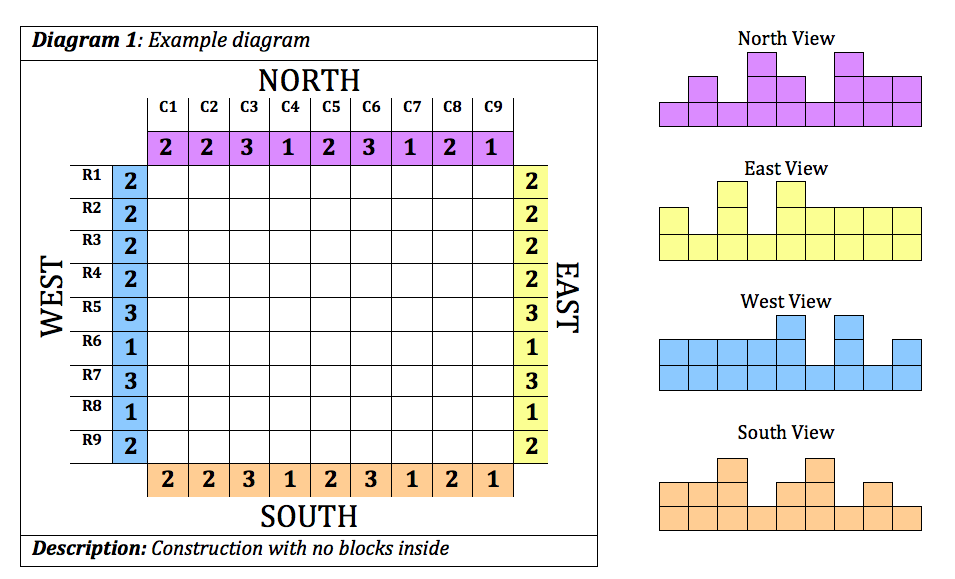
Diagram 1 shows an aerial view of the possible construction, thus transforming what originally can be considered as a 3D problem into 2D. The question then becomes, how many unique 9 x 9 matrices with the numbers 0-3 fulfill the North, East, South, West constraints?
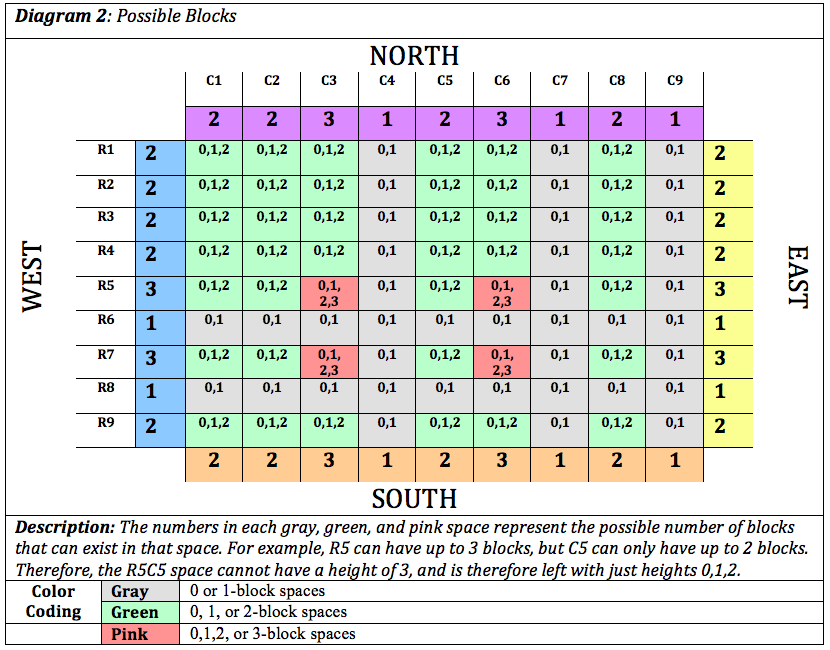
Diagram 2 shows the possible number of blocks that can exist in any given space. R1C4 cannot have more than 1 block, because otherwise the height of C4 would change to at least 2.
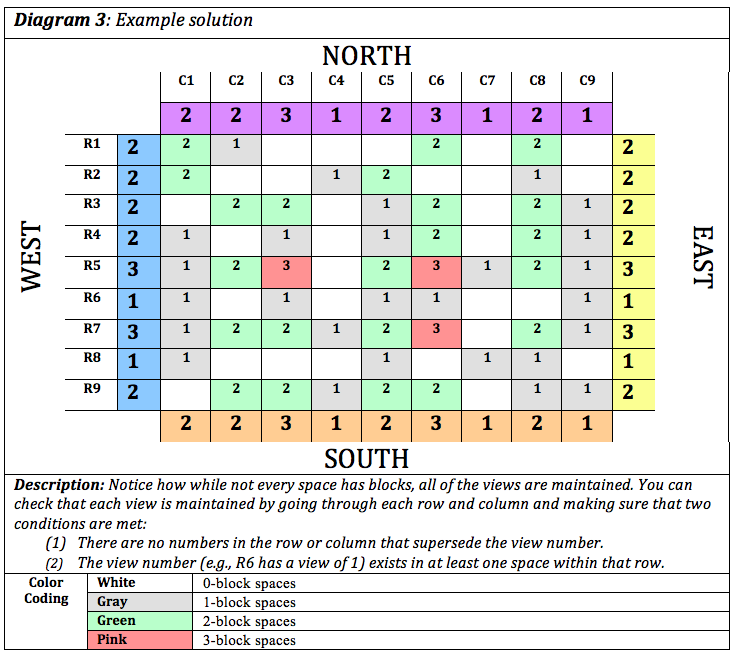
Diagram 3 shows a possible solution. White spaces are spaces where blocks are not placed.
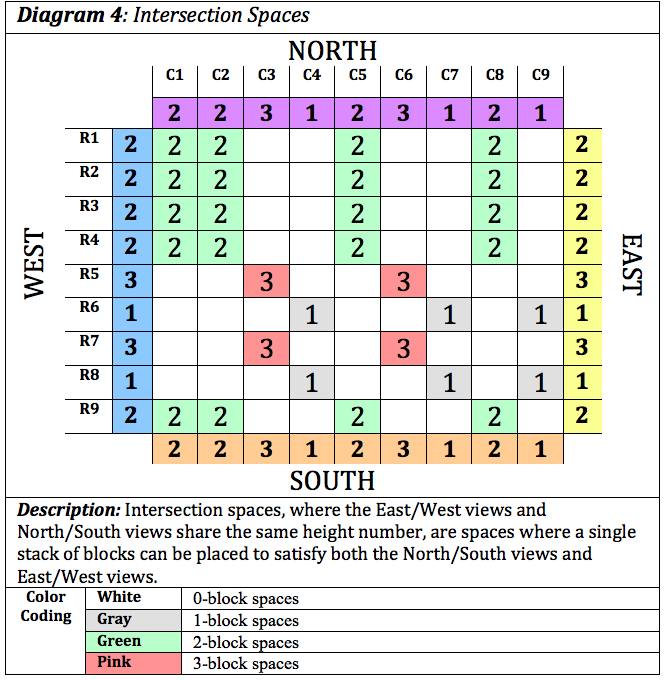
Diagram 4 shows the spaces of intersection, which have been key to identifying the possible number of solutions in the work I have finished so far.
INSERT WORK HERE